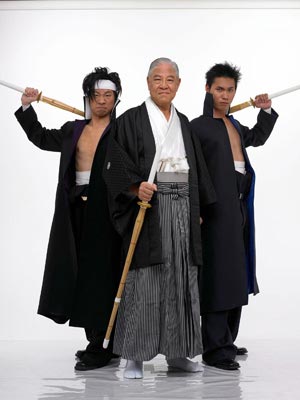There was this interesting item in the “Taiwan Quick Take” section of the Taipei Times.
A plan to change the name of Sanmin Township (三民) in Kaohsiung County has hit an obstacle as residents remain divided over what to name it. A Bunun-majority township, Sanmin was called Mayatsun during Japanese colonial rule and then Maya Township (瑪雅) after World War II. It was later renamed Sanmin after Sun Yat-sen’s (孫逸仙) “Three principles of the people.” Officials and some locals want to change the township’s name back to Maya. Although the name change is welcomed by many residents, some local elders suggest using another name, arguing that the name “Maya” was an incorrect name given by the Japanese. Officials will visit Japan to research the name before making a final decision.
This is an interesting colonialism related phenomenon in Taiwan, and I’m not sure whether it exists in other colonies or not. The most famous example is indisputably the city of Kaohsiung(高雄 in kanji/hanzi or “Gaoxiong” in correct Pinyin.) The currently used Chinese characters for the city’s name were given to it during the Japanese colonial period, when they were meant to be pronounced as “Takao,” based on the Japanese kun-yomi, as if it were a Japanese place name and not a Chinese one. The same name, pronounced as Takao and written as 高雄, is also used in Japan. The twist here, however, is that the name given to the city was in fact an attempt to approximate the historical name of the city, originally based on the region’s name in the language of the aborigines (“Takau,” meaning “bamboo forest”) who lived there long before ethnic Chinese settlers ever arrived from Hokkien across the Taiwan Straight. The Chinese had used various characters to approximate the name “Takau” over the years, such as “打狗” or “打鼓.” Similarly, the Japanese name 高雄 was meant to approximate the native name, except it only does so when read in Japanese, and not in any dialect of Chinese. After the Japanese left the city’s name remained as they had made it-part of their cultural legacy on the island-except the characters are now read as Chinese (Gaoxiong in Mandarin,) with the having somewhat ironically having maintained its original pronunciation all the way throughout colonial rule, only to lose it during the process of decolonization.
Another moderately well known example is the district of Xi’men in Taipei. Now known for its plethora of fashion stores, fast food and tattoo parlors (often referenced as Taiwan’s closest parallel to Harajuku,) Ximen’s name derives from being near the former location of the city’s west gate, from the hanzi 西門, literally meaning “west gate.” In Chinese speech, Ximen is often referred to as “Ximen-ding,” with “ding” being the Mandarin pronunciation of the character ” 町.” Students of Japanese will instantly recognize this character as one frequently used in Japan as a label for streets or neighborhoods in Japan, pronounced as either “chou” or “machi” depending on the context. If one looks at a map of Taipei from the period when it was ruled by Japan, one sees that 町 was a standard designation for parts of the city, in proper Japanese fashion. Since decolonization these names have all officially been changed, but Ximen-ding (and possibly others) still lingers as a colloquialism long after vanishing from the map.
A more unusual example that I personally discovered was a small village in the east coast province of Hualian, (花蓮) by the name of Morisaka. Although Japanese architecture dating to the colonial period is fairly common in Taiwan, this village is interesting in that it was constructed entirely in that period, and entirely in the Japanese style. Architecturally, there is little to no trace of Chinese or native influence, since there was apparently no village there before the Japanese built one. It was given the ordinary, almost generic, Japanese name of Morisaka (森坂 or possible 森阪- I forget which version of the second character was used.) Although people do live in the village, it is interestingly preserved in its historical demeanor as a sort of historical museum of the period (including some actual museums.) Although I believe the original name of the village 森阪, pronounced as Shenban in Mandarin, it appeared to me from the various signs that it was renamed as 摩里沙卡, which is a transliteration of the Japanese name into Chinese, read as mo li sha ka. Perhaps since the village had no pre-Japanese name, in either a Chinese or aboriginal language, it was decided that the pronunciation of “Morisaka” was the “true” name, which should be maintained. This is however highly unusual. The standard practice with Chinese character names in different languages has historically been to maintain the original orthography, and simply pronounce it in the language of the reader whenever possible, and I can think of no other cases in which a Chinese character place name was changed to maintain the pronunciation of one sinic orthography language in another. Unfortunately I am unsure which name is ordinarily used by the local residents, leaving the exact story of the village’s name incomplete and perhaps incorrect.
So there you have it. I think four examples, one from the Taipei Times and three from my own knowledge, is enough to at least begin to hint that there may be enough going on to use the word phenomenon. Do any readers have further similar examples, either in Taiwan or elsewhere?
 Japanese researchers have succeeded in producing see-through frogs, letting them observe organs, blood vessels and eggs under the skin without performing dissections.
Japanese researchers have succeeded in producing see-through frogs, letting them observe organs, blood vessels and eggs under the skin without performing dissections.

